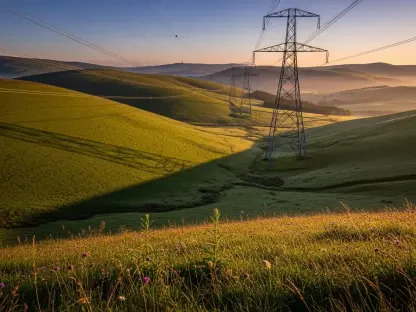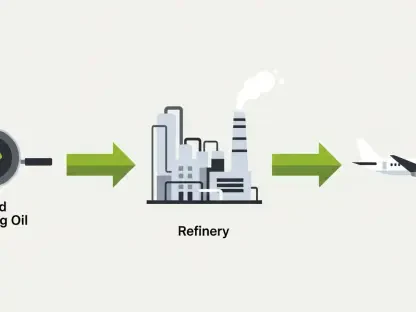The landscape of the US coal industry has recently witnessed significant movement due to strategic approvals granted by governmental bodies aimed at reinforcing energy independence. These initiatives, focused on enhancing resource utilization, aim to reaffirm America’s foothold in global energy markets. Notably, the US Department of the Interior has sanctioned a pivotal coal mining project to be conducted by Hurricane Creek Mining on Bryson Mountain in Tennessee, as well as a substantial nine-year operational expansion at Montana’s Bull Mountains coal mine. These developments catalyze discussions on the potential of new coal projects to solidify the nation’s energy independence.
Current State of the US Coal Industry
The current condition of the US coal industry is characterized by a complex mix of longstanding challenges and fresh opportunities. With the coal sector playing a crucial role in steelmaking and power generation, it remains an integral part of the national economy despite facing competition from renewable sources. Several main segments, such as thermal and metallurgical coal, continue to drive the industry’s operation. Meanwhile, advancements in technology have paved the way for more efficient extraction methods, while key market players consistently seek innovative solutions to improve competitiveness.
Regulations also play a pivotal role in shaping the coal industry’s trajectory. Federal and state laws, along with environmental standards, influence everything from production techniques to end usage. These regulations are critical, ensuring the industry contributes to energy needs while mitigating ecological impacts. Nonetheless, navigating the regulatory landscape presents a continuous challenge for many within the industry.
Key Industry Trends and Market Drivers
Emerging Trends and Technologies
The coal industry experiences several transformative trends that shape its dynamics and direction. Technological advancements such as cleaner coal production methods and improved extraction processes have emerged, aiming to reduce environmental impact and enhance yield. Additionally, there is a noticeable shift in consumer behavior, where both end-users and manufacturers increasingly demand more sustainably sourced coal.
New market opportunities arise as well, with integrated approaches linking coal with other energy resources to create diversified, stable energy portfolios. These trends highlight a move towards modernization, aiming for a balanced integration between maintaining traditional energy sources and adopting more sustainable practices.
Market Data and Growth Projections
The market’s outlook, with continued emphasis on coal for industrial processes, drives growth projections upward. Data indicates a resurgence in demand for coal, particularly in markets where coal remains a vital component of industrial energy consumption. Performance indicators show a modest yet steady rise in coal production volumes, supported by expansions and projects such as those recently approved by the DOI.
Forecasts suggest that these projects will eventually bolster both domestic supply and export capabilities, sustaining the industry’s relevance amidst an evolving energy landscape. However, careful orchestration and adherence to environmental standards remain essential to ensure long-term viability.
Challenges Facing the Coal Industry
Despite the promising prospects, the coal industry contends with numerous challenges, including both intrinsic and extrinsic factors. Technological hurdles, such as ensuring the effectiveness of new extraction methods and maintaining sustainability, require constant innovation and investment. Market dynamics, influenced by fluctuations in global demand and increasing competition from alternative energy sources, add layers of complexity.
Regulatory challenges persist as well, with evolving compliance requirements necessitating adaptive strategies. To navigate these obstacles, industry players may need to embrace collaboration and innovation as keys to unlocking potential pathways for enduring success and minimizing adverse impacts.
Regulatory Landscape
The regulatory framework governing the coal industry is intricate, encompassing significant laws and policies aimed at monitoring and controlling environmental impacts. Compliance with these regulations is paramount, not only for securing operational approvals but also for maintaining public and political trust. Recent regulatory changes reflect a trend toward enhancing environmental standards while also recognizing the need to streamline processes to foster competitiveness.
Security measures, ensuring safe and efficient operations, are increasingly integral to industry practices. Adapting to these shifts requires careful planning and alignment with overarching environmental goals without compromising energy output and economic contributions.
Future Prospects and Industry Direction
The coal industry’s future direction is set amidst global transitions toward cleaner energy, requiring innovative adaptation to maintain relevance. Emerging technologies and potential market disruptors introduce both risks and opportunities, challenging traditional practices while offering avenues for growth. Consumer preferences lean increasingly towards sustainability, prompting industry stakeholders to re-evaluate strategies.
Innovation remains a core focus, exploring avenues such as carbon capture and storage technologies while adapting to changing economic conditions. Navigating these avenues will require balanced efforts, ensuring that industry practices align with regulatory and market forces while addressing contemporary energy demands.
Conclusion and Recommendations
In conclusion, new coal project approvals underline strategic moves toward ensuring US energy independence. Challenges remain but are met with opportunities through technological advancement and regulatory adaptations. Recommendations suggest targeting investments in cleaner technologies and diversifying energy portfolios to ensure sustainable growth. Continuous innovation and collaboration with regulatory bodies may pave the way for promising future developments, ultimately fostering a resilient and adaptive coal industry.









